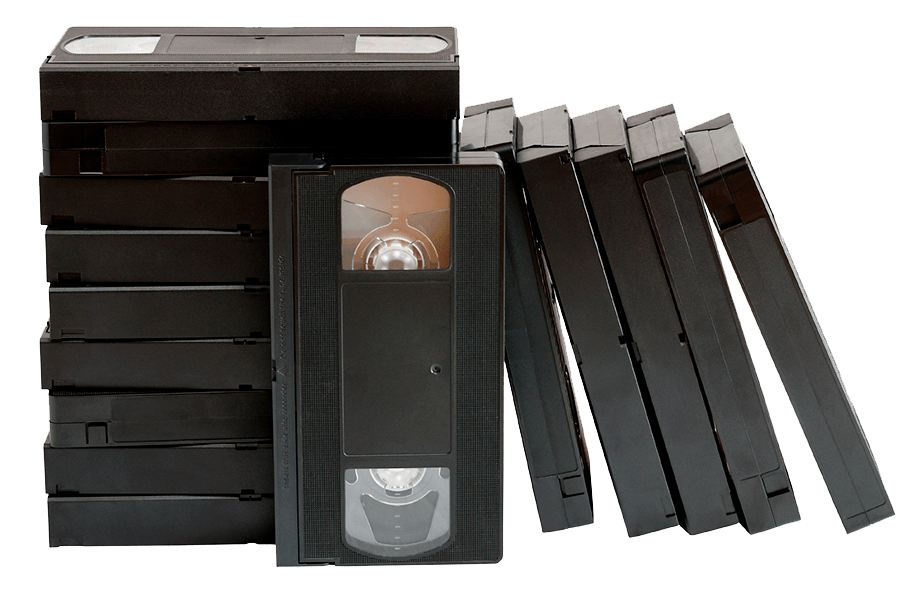
We offer a full suite of solutions to convert and transfer your VHS tapes into a digital file or DVD/Blu-ray format.
The brainchild of JVC, VHS was a popular consumer home video format developed in the 70s that would soon become the standard for commercial home use. Early on the VHS was in direct competition with Sony’s Betamax format, which offered a better visual fidelity, but was limited in its runtimes.
Because of this, and likely due to marketing schemes, where Betamax leveraged the prospect of taping live television to be watched at your leisure, the VHS collaborated with Hollywood to promote a non-existent video rental market, the lower costing VHS was embraced by the average consumer, who valued longer runtimes and entertainment over minor quality improvements.
The VHS, not unlike the Betamax, or the many VHS incarnations that would follow, used a magnetic oxide tape encased in a plastic housing. The plastic tape would transport between two reels and wrap around the tape head in the VCR, allow it to read and transmit the signal.
VHS tape capacity varies depending on the density of the tape within the specific cassette, and the recording speeds which are used to capture the information. Typically, a Standard Play VHS can hold up to 2 hours of content but in Long Play it can hold up to 4 hours of content and in Extended Play 6-8 hours.










